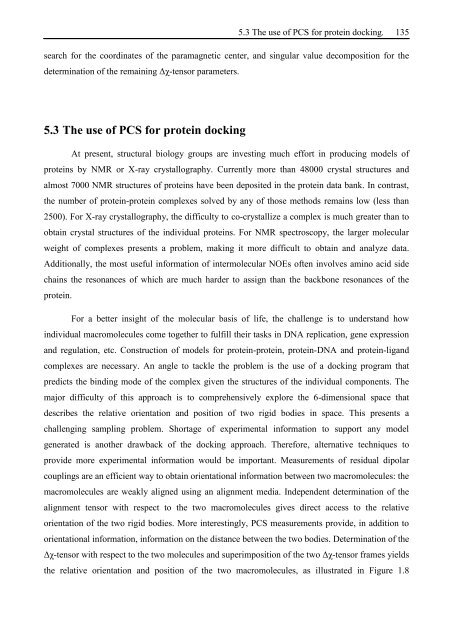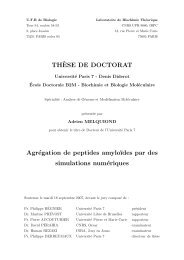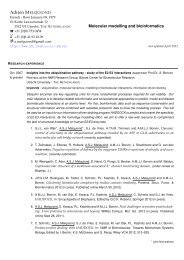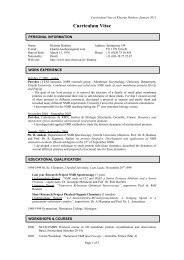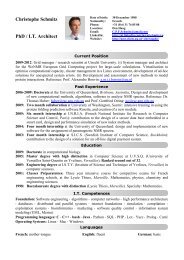Thesis Title: Subtitle - NMR Spectroscopy Research Group
Thesis Title: Subtitle - NMR Spectroscopy Research Group
Thesis Title: Subtitle - NMR Spectroscopy Research Group
You also want an ePaper? Increase the reach of your titles
YUMPU automatically turns print PDFs into web optimized ePapers that Google loves.
5.3 The use of PCS for protein docking. 135<br />
search for the coordinates of the paramagnetic center, and singular value decomposition for the<br />
determination of the remaining Δχ-tensor parameters.<br />
5.3 The use of PCS for protein docking<br />
At present, structural biology groups are investing much effort in producing models of<br />
proteins by <strong>NMR</strong> or X-ray crystallography. Currently more than 48000 crystal structures and<br />
almost 7000 <strong>NMR</strong> structures of proteins have been deposited in the protein data bank. In contrast,<br />
the number of protein-protein complexes solved by any of those methods remains low (less than<br />
2500). For X-ray crystallography, the difficulty to co-crystallize a complex is much greater than to<br />
obtain crystal structures of the individual proteins. For <strong>NMR</strong> spectroscopy, the larger molecular<br />
weight of complexes presents a problem, making it more difficult to obtain and analyze data.<br />
Additionally, the most useful information of intermolecular NOEs often involves amino acid side<br />
chains the resonances of which are much harder to assign than the backbone resonances of the<br />
protein.<br />
For a better insight of the molecular basis of life, the challenge is to understand how<br />
individual macromolecules come together to fulfill their tasks in DNA replication, gene expression<br />
and regulation, etc. Construction of models for protein-protein, protein-DNA and protein-ligand<br />
complexes are necessary. An angle to tackle the problem is the use of a docking program that<br />
predicts the binding mode of the complex given the structures of the individual components. The<br />
major difficulty of this approach is to comprehensively explore the 6-dimensional space that<br />
describes the relative orientation and position of two rigid bodies in space. This presents a<br />
challenging sampling problem. Shortage of experimental information to support any model<br />
generated is another drawback of the docking approach. Therefore, alternative techniques to<br />
provide more experimental information would be important. Measurements of residual dipolar<br />
couplings are an efficient way to obtain orientational information between two macromolecules: the<br />
macromolecules are weakly aligned using an alignment media. Independent determination of the<br />
alignment tensor with respect to the two macromolecules gives direct access to the relative<br />
orientation of the two rigid bodies. More interestingly, PCS measurements provide, in addition to<br />
orientational information, information on the distance between the two bodies. Determination of the<br />
Δχ-tensor with respect to the two molecules and superimposition of the two Δχ-tensor frames yields<br />
the relative orientation and position of the two macromolecules, as illustrated in Figure 1.8


